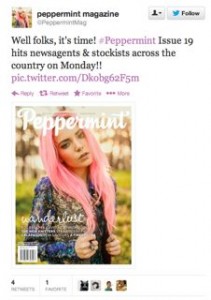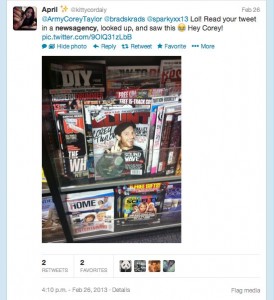 As the IFRA Beyond the Printed Word conference wound to an end this afternoon in Vienna I was left with more questions than when the conference began. Publishers I talked with see a rapidly approaching cliff in terms of print sales and ad revenue and some are rushing to find replacement revenue. Some openly say that the paid (over the counter or subscription) newspaper as we know it will be dead, in Europe at least, in a matter of years and will be replaced with an entirely new premium print model. They are the early adopters of new models. They are balanced with others who are yet to treat an online presence other than a poor cousin to the print edition.
As the IFRA Beyond the Printed Word conference wound to an end this afternoon in Vienna I was left with more questions than when the conference began. Publishers I talked with see a rapidly approaching cliff in terms of print sales and ad revenue and some are rushing to find replacement revenue. Some openly say that the paid (over the counter or subscription) newspaper as we know it will be dead, in Europe at least, in a matter of years and will be replaced with an entirely new premium print model. They are the early adopters of new models. They are balanced with others who are yet to treat an online presence other than a poor cousin to the print edition.
Back to the questions I arrived with: Is there a common strategy being adopted by publishers to find sustainable online revenue? Who is doing it well? Will online provide the revenue the shareholders in publishing firms are used to? Do the publishers get it that they are no longer newspaper publishers but, rather, media companies? Is there a place for the current distribution system (newsagents) in their thinking about the future? Do publishers really understand the Internet? Is there a revenue model which can work?
In hindsight the questions were naive in that this is all very new and publishers are learning as they go.
I saw heard about some excellent initiatives – Naples News is one, demonstrating what a newspaper with a circulation of 50,000 can achieve. What they are dong is way advanced on any Australian news site. They created this within a year. Core to their success was them taking the online move seriously from the top down and driving change. Check out their restaurant reviews and sports scores – yeah, the sports side of the side is truly amazing. The power available to the reader makes them the expert thanks to smart organisation of data.
The conference is proof that publishers the world over are taking the online challenge seriously and that print circulation marketing today is more about delaying rapid decline than achieving growth. I know there are publisher executives in Australia who disagree with me. Let’s check in in a year, two years and five years and see if I am right. If we follow the US and European examples sales will fall. However, I accept that our marketplace is different so who really knows when the inevitable change will hit. The keys are broadband take up, lower cost wireless devices and peer pressure. My plea to Australian newspaper publisher executives is – don’t get newsagents investing beyond what is absolutely necessary in and chasing paid circulation growth. Newsagents themselves need to ensure that every capital investment is for their future and not just to help publishers tread water.
Newsagents are middlemen. This makes us servants. We are not part of any publisher’s online strategy. I’m okay with that. Publishers need to do what is right for their shareholders. For our part, newsagents need to see the future and act now. We need to break out of being middlemen. We need to get smart about online. We need new revenue streams and they need this now for it will take years to change the habits of consumers.
Just as publishers have come to conferences like Beyond the Printed Word, so, too, should newsagents congregate and discuss their life after print. This is the biggest challenge in the 120 years our channel has existed.
While I am leaving the conference with more questions than when I arrived I have a better understanding of how publishers see the online opportunity and some of the strategies being employed and for that I am grateful.
 Great to see Peppermint magazine promoting newsagents as the for the latest issue out this Monday. They tweeted 14,000+ followers with the news. In checking them out I discovered Peppermint is Australia’s first and only eco and ethical fashion magazine. I did not know that. The information makes it useful in promoting the title.
Great to see Peppermint magazine promoting newsagents as the for the latest issue out this Monday. They tweeted 14,000+ followers with the news. In checking them out I discovered Peppermint is Australia’s first and only eco and ethical fashion magazine. I did not know that. The information makes it useful in promoting the title.







